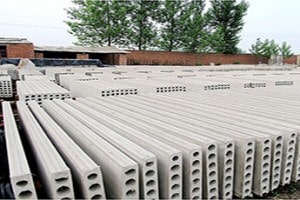Maintaining Heavy Engineering Equipment is one of the biggest operational challenges across industries such as cement, steel, mining, construction, infrastructure, and manufacturing. These machines work under extreme conditions—handling heavy loads, abrasive environments, and continuous operations—which makes timely maintenance essential for productivity and cost efficiency. However, many companies still struggle with routine upkeep, resulting in breakdowns, downtime, and financial losses.
In this article, we will explore the common challenges in maintaining heavy machinery and practical strategies to overcome them. Whether you operate crushers, rotary kilns, material handling systems, boilers, or large fabrication units, understanding these challenges will help you enhance long-term equipment performance.
-
High Wear and Tear Due to Harsh Working Conditions
Heavy engineering machines often work in dusty, hot, corrosive, or vibration-heavy environments. This accelerates the wear of components such as bearings, shafts, gears, hydraulic systems, and structural parts.
How to Overcome It
- Use wear-resistant materials and high-quality spare parts.
- Apply anti-corrosion coatings and temperature-resistant lubricants.
- Implement dust control systems and regular cleaning routines.
- Schedule inspections to detect early surface deterioration.
-
Lack of Predictive Maintenance Systems
Many industries still follow reactive or time-based maintenance, which often leads to unexpected breakdowns. Without predictive tools, failures go unnoticed until the machine stops working—leading to downtime and high repair costs.
Solution
- Adopt IoT-based predictive maintenance systems.
- Use sensors for vibration analysis, temperature monitoring, and oil condition tracking.
- Implement condition-based monitoring for equipment like conveyors, crushers, rolling mills, and kilns.
Predictive maintenance not only increases accuracy but also reduces unnecessary shutdowns and manpower dependency.
-
Shortage of Skilled Technicians
Heavy machines require trained technicians who understand hydraulics, mechanical systems, automation, and material science. However, many plants face a shortage of experienced manpower, leading to delays in maintenance and incorrect handling.
Solution
- Conduct in-house training and certification programs.
- Partner with OEMs (original equipment manufacturers) for technical workshops.
- Use digital maintenance manuals, AR-based training tools, and automated monitoring systems.
Skilled manpower significantly enhances equipment safety, uptime, and efficiency.
-
Inadequate Lubrication Practices
Improper or irregular lubrication is one of the biggest reasons for component failure. Over-lubrication, under-lubrication, or using the wrong lubricant causes friction, heating, and premature damage.
Solution
- Follow a strict lubrication schedule.
- Use automatic lubrication systems for continuous and precise oiling.
- Select lubricants based on OEM recommendations and working conditions.
- Conduct regular oil analysis to detect contamination or oxidation.
Maintaining Heavy Engineering Equipment requires a proactive approach, smart planning, and investment in modern technologies to avoid downtime and unexpected failures.
-
Poor Inventory and Spare Parts Management
Delays in importing or fabricating specialized spare parts can significantly increase machine downtime. Many companies also stock too many unused spares or fail to maintain critical part inventories.
Solution
- Maintain a digital inventory management system.
- Identify critical spares and stock them in advance.
- Develop strong vendor partnerships for quick supply.
- Use standardized components wherever possible.
-
Safety Concerns During Maintenance Activities
Heavy Engineering Equipment involves high-risk maintenance tasks, including alignment, lifting, welding, dismantling, and working with moving machinery. Safety lapses can lead to accidents, equipment damage, or legal issues.
Solution
- Implement strict SOPs (Standard Operating Procedures).
- Provide PPE (Personal Protective Equipment) for all maintenance staff.
- Conduct routine safety audits and hazard assessments.
- Use lockout-tagout (LOTO) systems during repairs.
Safety-first maintenance builds trust, reduces downtime, and ensures compliance with industry regulations.
-
Rising Maintenance Costs and Budget Constraints
Inflation, higher steel prices, specialized spares, and advanced technologies have all increased maintenance costs. Companies often struggle to balance their budgets while ensuring uninterrupted operations.
Solution
- Adopt long-term maintenance planning instead of short-term fixes.
- Use TCO (Total Cost of Ownership) calculations for decision-making.
- Invest in automation and advanced diagnostic tools to reduce manual dependency.
Continuous monitoring and planned maintenance ultimately lower costs and extend equipment life.
Conclusion
Industries depend heavily on robust machines, and maintaining them is crucial for operational efficiency and long-term profitability. While challenges such as harsh environments, limited skilled workforce, rising costs, and poor maintenance practices continue to impact performance, companies can overcome them through advanced technologies, predictive maintenance, proper training, and efficient inventory management. By implementing these strategies, organizations can maximize uptime, reduce failures, and ensure the smooth functioning of their Heavy Engineering Equipment.
Other Recommendations: AAC block manufacturing machine

